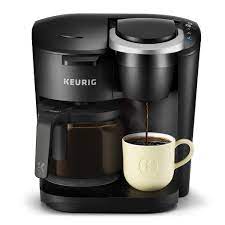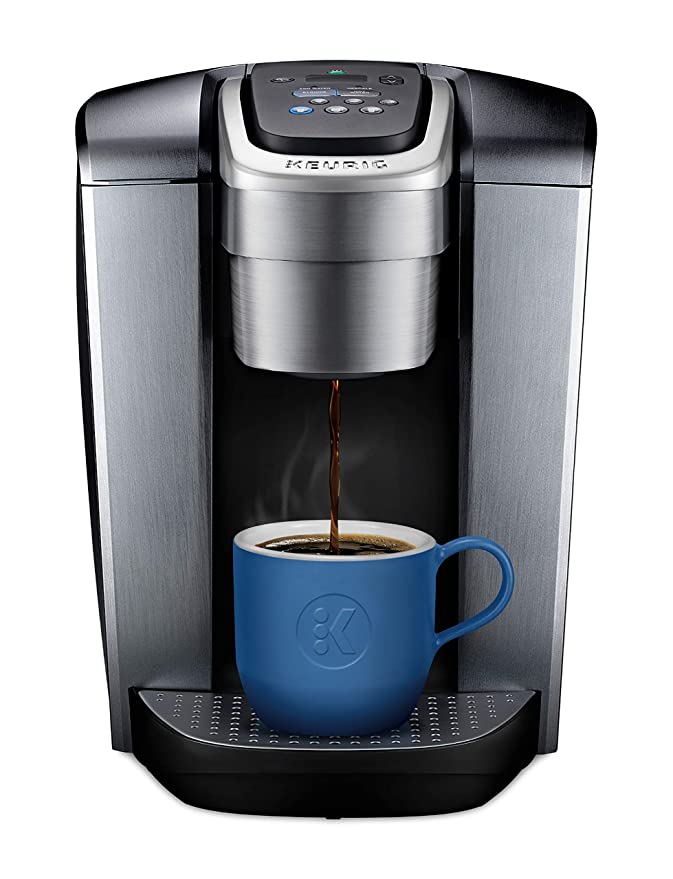Can I Use Hot Water In My Keurig?

If you’re like me, you enjoy a hot cup of coffee first thing in the morning. However, if your Keurig does not produce hot enough coffee for you, you may have questioned, “Can I use hot water in my Keurig?”
I decided to see if it made a difference in the temperature of the coffee. Here’s what I found out:
You may use hot water in your Keurig machine. However, because the plastic water tank is neither insulated nor heated, it quickly becomes chilly. If you use boiling water, you risk damaging the tank. Keurigs also include an inside tank with a heating element. As a result, using hot water has little effect on the temperature of the coffee.
There’s something about a firm, hot cup of coffee that sets the day off to a good start.
I’ve discovered that coffee tastes best when brewed with water between 195 and 205 degrees Fahrenheit. If you have a French press or a pour-over coffee maker, this is ideal. You have total control over the water temperature when using a French press or pour-over coffee machine.
But what if you’re making coffee using a Keurig?

On most of their machines, you have almost little control over the water temperature. In any case, how hot can a Keurig get? Can you use hot water in a Keurig to produce a hotter cup of coffee? Will it wreak havoc on the machine?
Can you add hot water to a Keurig reservoir?
You can, but I’m not sure I’d suggest it.
For cold water, Keurigs feature an external plastic water tank. It isn’t insulated or heated, so it will quickly become chilly if you put hot water in it.
Keurigs feature an inside tank with a heating element as well. As it brews the coffee, it warms the water. The Keurig keeps the water in the internal tank hot, as long as it is turned on.
You may wind up destroying the reservoir tank depending on how hot the water is. You may wind up harming the seals, internal piping, or internal filters over time.
The only benefit I can see from putting hot water in the reservoir is that it may speed up the brewing of your first cup of coffee.
Does using hot water in my Keurig spoil the machine?
Every coffee maker has a standard heating cycle that does not alter whether you use hot or cold water.
It follows the same cycle, and if the water you put in is much hotter when it enters, it will be significantly hotter when it exits. As a result, your coffee may have a bitter taste.
Hot water from the faucet that has been heated in a hot water tank is more likely to include additional minerals.
Furthermore, hot water that has been in your hot water tank for an extended period may include sediment, rust, or other impurities.
Water minerals can harm your Keurig and produce scaling.
It will have no apparent influence on the coffee’s flavor. Unless, of course, your water heater is mineral-rich.
Is your Keurig’s descale light still illuminated after you’ve descaled it?
That’s infuriating! However, check out this latest post on what it means if you’ve descaled and the light is still not turning off.
I go through every conceivable reason and cure to get you back to brewing in no time! I also go through the “slap and burp” approach, which Keurig doesn’t like, but many claim that it work like a charm!
What temperature does the Keurig heat water to?
The ideal temperature for a superb cup of coffee is generally considered to be between 190 and 200 degrees Fahrenheit.
All Keurig machines are preset at 192 degrees.
Even models with warmth adjustment don’t reach any hotter than 192 degrees Fahrenheit.
If your coffee isn’t brewing as hot as it should, switch off the heating element. This might be because the water is not adequately pumping through the machine due to scaling or being blocked.
When no water is pushed through the machine, the heating element turns off to avoid overheating. Clean out your Keurig thoroughly.
Tiny particles of dust, coffee, and other substances might become lodged in particular machine components, creating malfunctions. To loosen these microscopic particles, try flipping them upside down and hitting the machine’s bottom.
If it’s still not operating correctly, there might be a mechanical or technical problem that has to be addressed.
Which Keurig model makes the hottest coffee?

The majority of Keurig coffee machines do not include temperature control.
To obtain the hottest cup of coffee, invest in a Keurig that allows you to customize the temperature. So the Keurig K-Elite Single-Serve K-Cup Pod Coffee Maker is the one you want.
It makes your cup in under a minute and lets you set a temperature range for the coffee serving temperature, ranging from 187 to 192°.
This one makes a lot of sense, with nearly five stars and well over 1,000 ratings.
Another type, the Keurig K575, offers several excellent capabilities, like five temperature settings and dispensing hot water on demand, and they are great features.
Unfortunately, at $550, it isn’t a cheap alternative for the ordinary shopper. Fortunately, Amazon states that the Keurig K-Elite is a “newer variant” of the K575, and it’s far less expensive and has received rave reviews.
How can I make my Keurig coffee hotter?
You may believe that heated coffee tastes better than cold coffee. I prefer my coffee very hot, but it will be harsh if it is too hot.
And, since we’re on the subject of Keurig water filters, are they universal, or do you have to buy the costly Keurig ones?
However, if it tastes okay but you want it a bit hotter, Keurigs with changeable temperature settings are available.
If 192 degrees isn’t hot enough for you, there are a few options.
- Increase the number of cups. If you’re using paper or foam cups, make two of them. Heat will escape pretty fast from a single cup.
- First, run a brew cycle. A machine that has been idle for a while or recently been turned on will create a colder cup of coffee. To preheat the brewer, run a brew cycle with only water.
- Make use of a mug warmer. A heated cup will only slightly warm your coffee, but it will keep it warm for a more extended period.
- Make use of a smaller cup. Mugs with large holes cool faster than mugs with narrow ones. A cup with a lid can keep the heat in for much longer.











